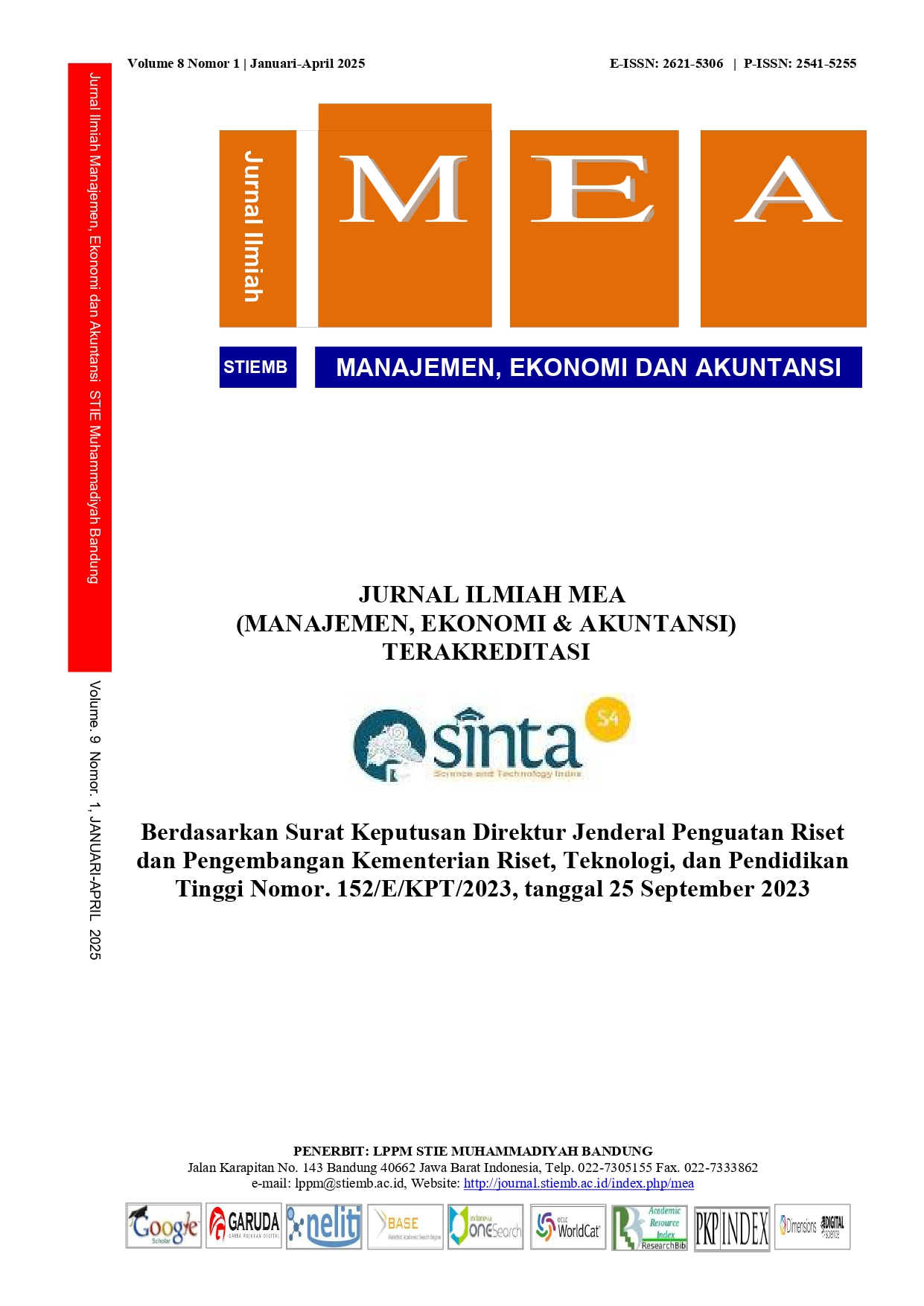STUDI KASUS BEBAN KERJA DENGAN METODE FULL TIME EQUIVALENT DALAM MEMPRODUKSI KOMPONEN BENCH VISE 125
Abstract
Productivity in the manufacturing industry is greatly influenced by the physical capacity of workers, especially in jobs involving heavy physical activity, which can cause fatigue and reduce efficiency. One way to increase efficiency is to eliminate waste in production, such as waiting time and product defects, which can be reduced with the Lean Manufacturing approach through continuous improvement. This study aims to analyze the workload of operators in the bench vise 125 production process in the Polytechnic X production laboratory by applying the Full Time Equivalent (FTE) method to determine the optimal number of workers where the calculation results show that three of the four processes have excess loads that can be anticipated by adding seven operators to each process. The results of this study are expected to be information and considerations as well as evaluation discussions in one of the bases for determining policies in the Polytechnic X production laboratory.
References
Ariyani, E., Sadikin, S., & Muhammad, A. (2023). Survei Kepuasan Masyarakat Sebagai Tolok Ukur Keberhasilan Implementasi Pelayanan Publik Dalam Mencapai Good Governance Di Politeknik Manufaktur Bandung. Jurnal Ilmiah Manajemen, Ekonomi, & Akuntansi (MEA), 7(2), 322-330.
E. R. Kabul dan M. N. Febrianto, Implementasi Metode Full Time Equivalent (FTE) Dalam Analisis Kebutuhan Tenaga Kerja, Jakarta: Universitas Persada Indonesia, 2022.
E. Sari. (2018, May 11). 7 Waste Dalam Lean Manufacturing [Daring]. Tersedia pada: https://www.jtanzilco.com/blog/detail/1014/slug/7-waste- dalam-lean-manufacturing
Gaspersz, V., dan Fontana, A., 2011. Lean Six Sigma for manufacturing and services industries: waste elimination and continuous cost reduction.Bogor: Vinchristo Publication
Hardiansyah, H., Suliawati, S., & Sibuea, S. R. (2022). Analisis Beban Kerja dengan Pendekatan Metode Full Time Equivalent (FTE) pada Pembuatan Meja Belajar di CV Setia Abadi. Factory Jurnal Industri, Manajemen dan Rekayasa Sistem Industri, 1(2), 67-73.
I. Z. Sutalaksana, R. Anggawisastra, dan J. H. Tjakraatmadja, Teknik Perancangan Sistem Kerja, Bandung: ITB Bandung, 2006.
M. L. Pattiapon, N. E. Maitimu, dan I. Magdalena, Penerapan Lean Manufacturing Guna Meminimasi Waste pada Lantai Produksi (Studi Kasus: UD. FILKIN), Ambon: Universitas Pattimura, 2020.
P. Agung, R. Linda, M. Meri Z, dan J. Isna, Analisis Waktu Baku dan Kapasistas Produksi dalam Proses Pembuatan Mesin Perontok Jagung di CV. Citra Dragon, Padang: Universitas Ekasakti, 2021.
P. E. Sekarningsih dan A. F. Hadining, Analisis Pengukuran Kerja Dalam Menentukan Waktu Baku Pada Operator Mesin Broaching Dengan Metode Pengukuran Waktu Jam Henti (Studi Kasus: PT XYZ), Karawang: Universitas Singaperbangsa Karawang, 2022.
Sadikin, S., Ariyani, E., Muzakki, M., Muhammad, A., & Waluyo, G. (2024). Pengaruh Kepuasan Kerja Dan Motivasi Kerja Terhadap Komitmen Organisasi Para Lulusan Polman Bandung Di Perusahaan Manufaktur. Jurnal Ilmiah Manajemen, Ekonomi, & Akuntansi (MEA), 8(1), 1680-1693.
Tarwaka, Solichul, H., & Sudiajeng, L. (2004). Ergonomi, untuk keselamatan, kesehatan kerja dan produktivitas (1st ed.). Surakarta: UNIBA PRESS.
Tarwaka. (2011). Ergonomi Industri: Dasar-dasar Pengetahuan Ergonomi dan Aplikasinya di Tempat Kerja. Surakarta: Harapan Press.
W. Junita, Analisis Beban Kerja dengan Pendekatan Metode Full Time Equivalent (FTE) (Studi Kasus: CV. Roland Kencana Pasir Sebelah, Padang), Padang: Sekolah Tinggi Teknologi Industri Padang, 2019
Y. W. Pambudi, Skripsi Analisis Beban Kerja Karyawan Dengan Metode Full Time Equivalent (Studi Kasus Ukm Unlogic Projeck), Yogyakarta: Universitas Islam Indonesia, 2017.
Z. Raharusun, A. Soleman, dan A. L. Kakerissa, Penetapan Studi Gerak, Penentuan Waktu Baku dan Pengukuran Produktivitas Kerja pada Proses Pengemasan Abon Ikan, Ambon: Universitas Pattimura, 2023.
Copyright (c) 2025 Jurnal Ilmiah Manajemen, Ekonomi, & Akuntansi (MEA)

This work is licensed under a Creative Commons Attribution-NonCommercial 4.0 International License.





















